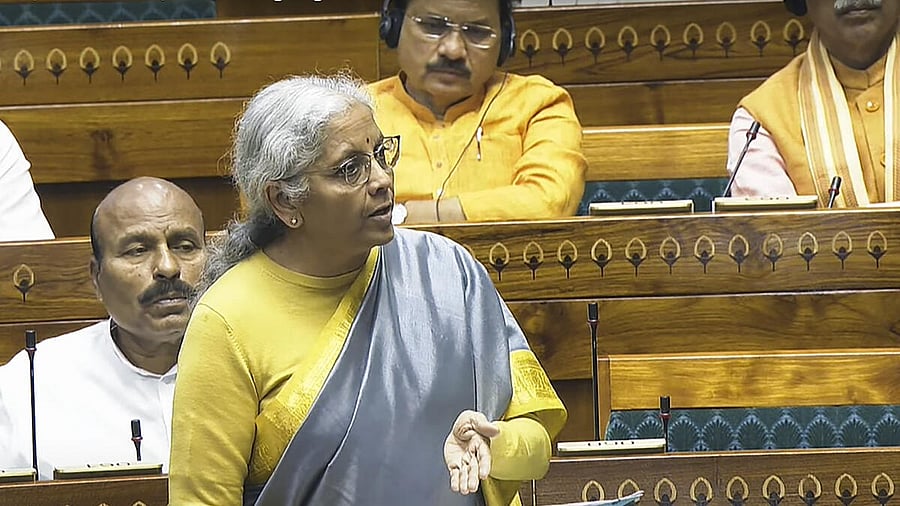
Union Finance MInister Nirmala SItharaman while presenting the new Income Tax Bill 2025 in the Lok Sabha.
Credit: PTI Photo
Finance Minister Nirmala Sitharaman introduced the new Income Tax Bill 2025 in the Lok Sabha today. The bill proposes a major overhaul of India's personal tax laws. It will now be sent to a committee for review and suggestions, which will then send it back to the government. The government will re-introduce the bill after considering recommendations by the committee. Here are key takeaways from the Income Tax Bill 2025:
Tax Year concept
The concept of a tax year is being introduced in the new Income Tax Bill. This will get rid of the confusion between assessment year (AY) and financial year (FY). The single tax year concept will help taxpayers understand for which fiscal year their taxes are being filed.
No change to financial year
The new bill does not change the concept of the financial year. It will remain as it was before—the year will begin on April 1 and end on March 31.
Changes to sections
The new income tax bill will change the sections under which tax laws are found. In the current Income Tax Act, tax return filing rules can be found under Section 139. In the Income Tax Bill 2025, these rules are covered under Section 115BAC.
No change in residency laws
Residency laws will remain the same under the new income tax bill. This is how they are divided:
- Ordinarily resident individuals
- Non-ordinarily resident individuals
- Non-resident individuals
A comprehensive Income Tax Bill
The crispier and simplified Income Tax Bill has 536 sections, and 23 chapters running into 622 pages. It has half the words of Income Tax Act, 1961.
The Income Tax Bill, 2025 comprises 536 sections, higher than 298 sections of the current Income-Tax Act, 1961. The existing law has 14 schedules which will increase to 16 in the new legislation.
However, the number of chapters have been retained at 23. The number of pages has been reduced substantially to 622, almost half of the current voluminous Act which includes amendments made over the last six decades.
When the Income Tax Act, 1961, was brought in, it had 880 pages.
"This increase in sections reflects a more structured approach to tax administration, incorporating modern compliance mechanisms, digital governance, and streamlined provisions for businesses and individuals. The new law introduces 16 schedules and 23 chapters," AMRG & Associates Senior Partner Rajat Mohan told PTI.
Ease of interpretation for taxpayers
All deductions from salaries have been tabulated in a single place in the new tax bill, which has also simplified for businessmen the computation of depreciation by giving the mathematical formula to be used.
Ease in TDS compliance, but some sweeping changes needed
All provisos on tax deducted at source (TDS) have been brought under a single clause and have also been presented using simple tables. However, when implementation is carried out, major changes will have to be made in forms and utilities.
No change in ITR filing deadline
The new Income tax bill has not introduced any change to the ITR filing deadline.
No change to heads of income
The new I-T bill has not proposed any change to heads of income from what is there in the current Income Tax Act. As per experts, the new I-T bill proposes to remove 300 provisions deemed obsolete from the current I-T Act.
Implementation of the new law
The new income tax bill will most likely come into effect from April 1, 2026 or the fiscal year 2026-27.
